For some really great beekeeping titles check out www.wicwas.com
First Wicwas Book for 2014
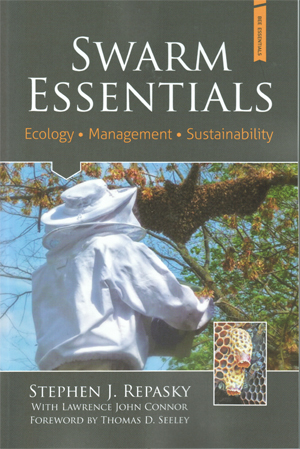
Price:
Authors or Editors:
Stephen J. Repasky with Lawrence J. Connor
Ideal For:
All Beekeepers, Naturalists and Adventurers
Description:
Swarming is one of the most powerful instincts that most successful beekeepers encounter. Swarm Essentials outlines the ramifications of swarming behavior (highlighting the often overlooked benefits), proven prevention and management techniques, and how to recover and even prosper from a successful swarm attempt. Second generation beekeeper Stephen J. Repasky's inaugural publication marks the latest addition to the Essentials series and is an excellent read for any beekeeper who hopes to make it past their first year.
2013 Revised Honey Bee Biology and Beekeeping Drs. Dewey M. Caron and Lawrence John Connor
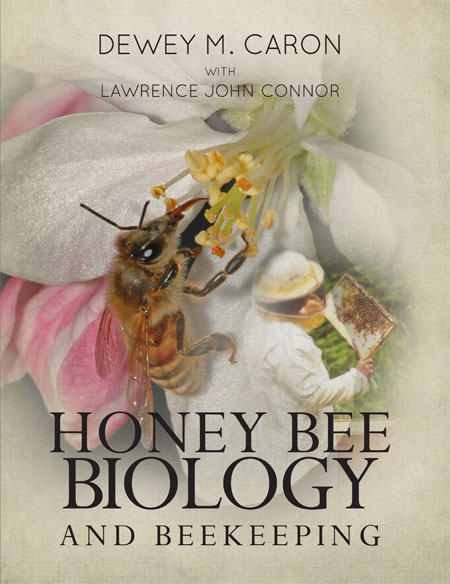
• Hard Cover
• 368 pages of vibrant color photos, diagrams & updated materials
• Questions and exercises for self-study & classroom teaching
• $60, includes priority mail
This book is perfect for:
• Bee schools and classes
• Master beekeeper study and review
• Life-long learners
For multiple copies for classroom, bee school or resale, contact LJConnor@aol.com for a quote including shipping costs. You will receive a discount for multiple copy orders.
For single copies, order from the Wicwas Press website, www.wicwas.com, and use the PayPal bookstore.
—Chapter titles—
• Introduction Beekeeping art or science, humans and bees, bees as weapons, bee gums, superorganism, learning beekeeping
• What’s in a name? The classification system, bumble bees, other bee species, races and hybrid bees
• Sociality Insect societies, wasps, ants, stinging in Hymenoptera
• What is a honey bee? Hive bees, field bees, fifferentiation
• Honey bee anatomy Digestive and excretory systems, reproduction and other systems, how the bee’s body works
• Bee nest Beeswax comb, nest organization, the modern beehive
• Dance language communication The wagtail dance, dance language controversy
• Pheromone communication Queens, pheromone functions, food transmission, colony odor, trail pheromones
• Queens, queens, queens Replacement, swarming, queenless
• Foraging and bee botany Forager types, water and propolis, fruit bloom, clovers, major U.S. nectar and pollen plants
• Getting started When and how, personal equipment, setting up hives, drifting
• Basics of management Key concepts, avoiding stings, robbing
• Fall and winter in the beehive Requeening, feedinig why colonies die
• Spring management Spring buildup, weak colonies, swarm control
• The honey harvest Nectar flow, supering, harvesting honey
• Honey & other bee products What can go wrong? Pollen, beeswax, royal jelly, pollen, bee brood, venom, mead
• Queen mating and rearing Raising queen bees, mating control, nucleus colony basics
• Pollination Managing bee colonies for pollination, improving pollination results
• Bee mites Varroa mites, integrated pest management, treatment options for mite control
• Diseases and pests Adult and brood diseases, pesticides,
conditons that mimic disease
Undertanding Bee Anatomy: a full colour guide
Ian Stell, MD, London
COLOR THROUGHOUT!
Approx. 6.75 inches wide and 9.75 tall, softcover, 203 pages, Catford Press.
$60 priority mail postpaid in the United States
Wicwas Press is authorized to sell this book for Dr. Stell in the United States and Canada
This book aims to do two things.
Firstly, to explain the structure of this fascinating insect and secondly, through stunning images, to reveal the insect’s intricate detail.
Dr Stell has applied his knowledge of the human body in describing the honeybee, system by system.
The book starts with a chapter on the developmental stages, showing the internal changes taking place from the egg to the larva, and then the pupa.
It includes chapters on all body parts, wings and flight structures, the circulatory, respiratory and digestive systems and finishes with chapters on the queen and the drone.
The anatomy is explained in clear colour diagrams and illustrated with over six hundred high-quality photographs. These include electron micrographs, close-up images, high-power stained sections (histology) and other techniques.
This concise but readable book is perfect for the British exams in bee biology and training for master beekeeper programs in the United States. It is also a valuable resource for any beekeeper wanting to understand his insects better, or any student or scientist working in this area.
Dr. Ian Stell, has been a beekeeper in an urban area in South-East London since 1998, keeping about fifteen colonies. His day job is as a doctor in Emergency Medicine. Keeping bees has involved facing many disease challenges, much as Emergency Medicine does. This has led Ian into an interest in the microscopic examination of bees, and he has applied his knowledge of the human body in describing the honeybee, system by system. Ian became a Master Beekeeper in 2010, and was awarded the prestigious Wax Chandlers award, from one of the ancient City Livery companies with an historical link to beekeeping.
________________________
www.wicwas.com
__________________________________________________
History of American Beekeeping, Reprint of Frank Pellett's Classic 1938 Work.
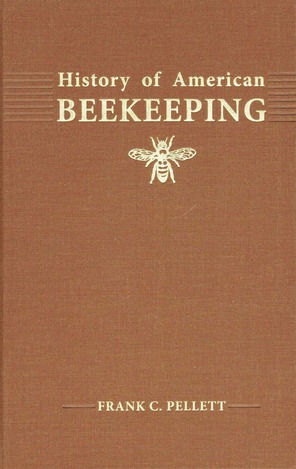 It took me years to find a copy of this book I could afford, and then only due to the kindness of a friend. After the popularity of the Doolittle books, I knew that beekeepers liked classic reprints. And what a reprint this is. I was able get this reprinted by a printer who is a master of detail, Jeff Shaw, a Burgh Bees' member in Pittsburgh. The reprint looks just like the original, only fresher and a lot less expensive! There is gold foil and an embossing on the cloth hardcover. The book is Smythe sewn, so it will last longer than most first owners. Inside the book is exactly the same as the original but printed on earth-friendly paper and plant-based inks.
It took me years to find a copy of this book I could afford, and then only due to the kindness of a friend. After the popularity of the Doolittle books, I knew that beekeepers liked classic reprints. And what a reprint this is. I was able get this reprinted by a printer who is a master of detail, Jeff Shaw, a Burgh Bees' member in Pittsburgh. The reprint looks just like the original, only fresher and a lot less expensive! There is gold foil and an embossing on the cloth hardcover. The book is Smythe sewn, so it will last longer than most first owners. Inside the book is exactly the same as the original but printed on earth-friendly paper and plant-based inks.
The price is $35 including priority mail postage inside the United States, and $45 elsewhere. If you cannot use the following website's PayPal account, send a U.S. Dollar check drawn on a U.S. Bank to Wicwas Press, 1620 Miller Road, Kalamazoo, MI 49001, USA.
www.wicwas.com
__________________________________________________
Consider Bee-sentials: A Field Guide as your bee school textbook

A number of bee clubs and bee school instructors have switched to
Bee-sentials: A Field Guide, for their bee school textbook. The book was published last year, has 208 pages, and is in full color.
There are 15 chapters that may be used for lectures in a semester-long class, or covered survey-style in a one-day bee school.
It contains a thorough overview of getting-started basics, an equipment section, and how-to set up hives.
It recommends new beekeepers start with two hives their first season so they help each other during the summer, and helps them get at one least colony through the winter. AND it discusses the establishment of a nucleus colony for spare queen backup.
It reviews the beekeeper's management year, has 25 pages of bee plants in full color, covers the major hive products, and explains swarm management and control.
There is a good treatment of bee mites and diseases, all with close-up color photos.
Worker, drone and queen production and activities review what is normal and how to problem solve.
Hive nutrition, other bee species, bee club mentorship are included. So are an extensive glossary, reading list and index.
If you go the the www.wicwas.com website, you may purchase copies for $29.95 postpaid. But if you email LJConnor@aol.com, you can find out how to purchase quantities of this book at discount. As an instructor, ask for a free copy for your use while teaching the class.
We have lots of copies in inventory, and will ship them out as soon get your order.
Bee-sentials gives the new beekeeper a book with meat on it's bones, a book they can carry in their briefcase, purse or backpack, or keep in the car or truck as they go to the bee yard. It has the basics, and a whole lot more. Many advanced beekeepers learn from this book as well. There are dozens of questions other beekeepers have asked, that have have been answered.
Send that email today to LJConnor@aol.com and get details about using this book for your next class.
www.wicwas.com
__________________________________________________
Include this book in your beekeeping courses for new and experienced beekeepers. More than building your own beehive. This book shows you how to make and USE simple tools in the apiary.
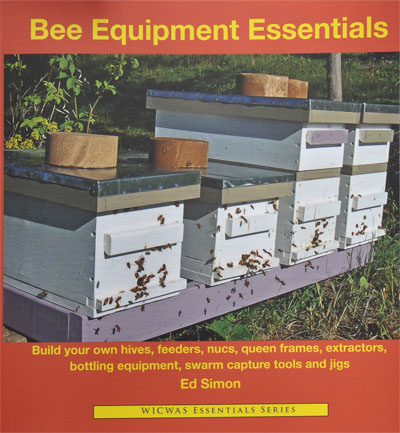
This large format, softcover book folds open in the shop for ease of use.
Large font size.
Full color throughout.
Drawings of most items, and how-to-use photos.
Ed Simon is a retired IBM trainer, and now dumpster diver, who enjoys building things and is a master of building jigs that hold equipment together during assembly.
He writes for Bee Culture magazine.
Price mailed—$20.00 inside the USA.
There is something in this book for you whether you are a new beekeeper or an 'Old Smoke.'www.wicwas.com
Please visit www.wicwas.com for a look at the complete bee book list. Remember, when you order two or more books at one time, I ship (to USA locations) by Priority Mail when your order fits the flat rate envelope or box. For example, if you get two or more of the Essentials booksthe order ships Priority Mail. The History and Anatomy books automatically ship by priority mail and no additional fee is required.
Thanks for your support and book-buying passion. I hope to see you soon!
Larry Connor, Ph.D.
Wicwas Press






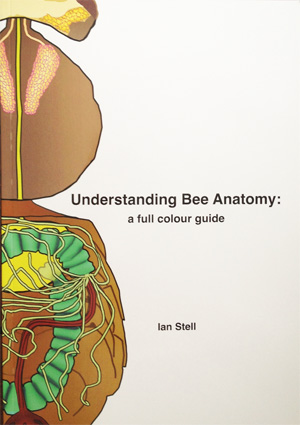

 A number of bee clubs and bee school instructors have switched to Bee-sentials: A Field Guide, for their bee school textbook. The book was published last year, has 208 pages, and is in full color.
A number of bee clubs and bee school instructors have switched to Bee-sentials: A Field Guide, for their bee school textbook. The book was published last year, has 208 pages, and is in full color. This large format, softcover book folds open in the shop for ease of use.
This large format, softcover book folds open in the shop for ease of use.